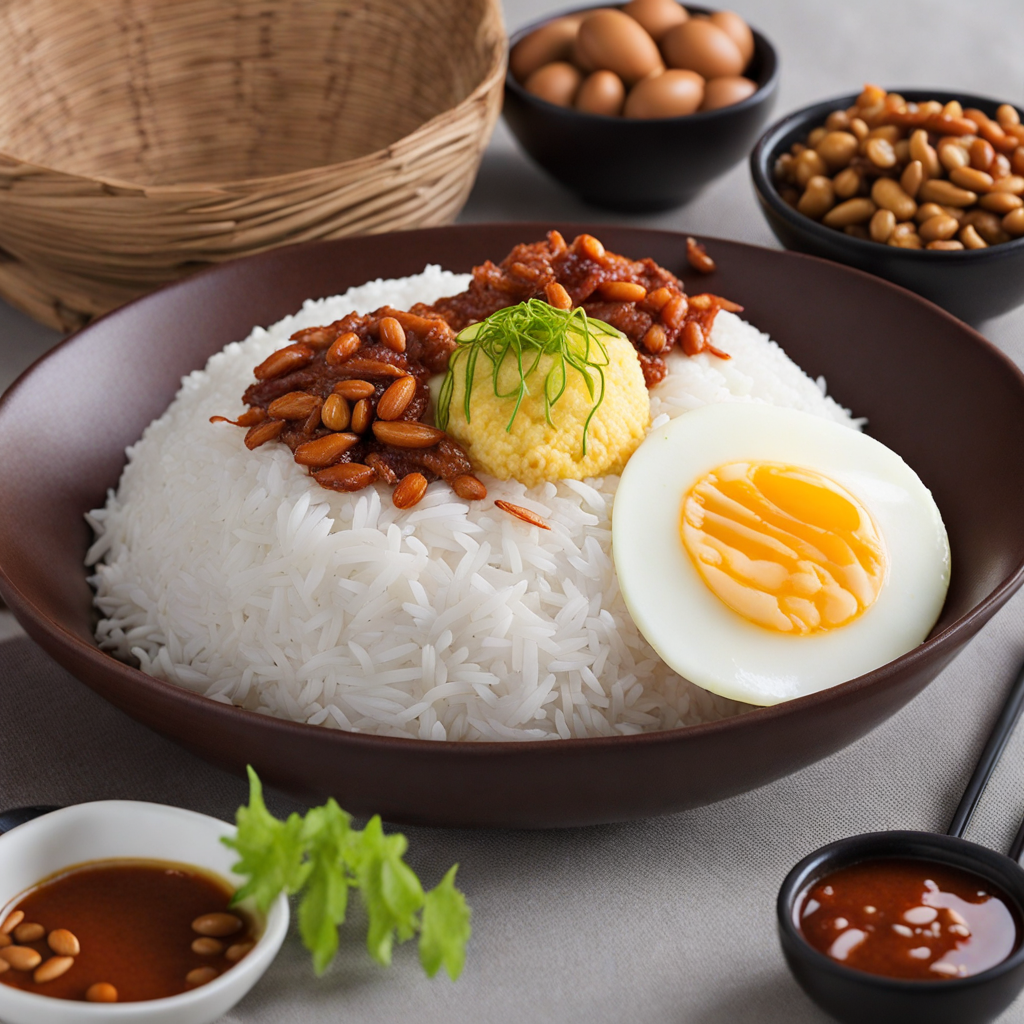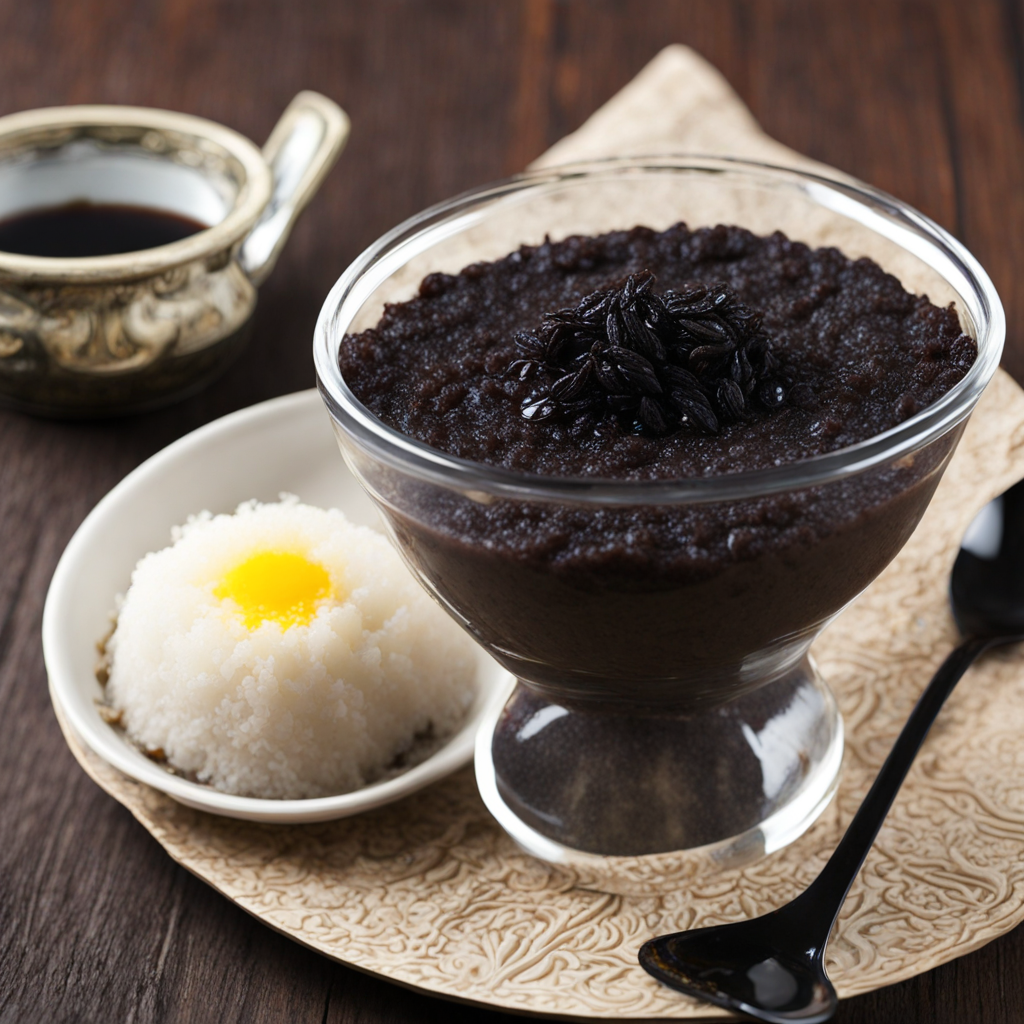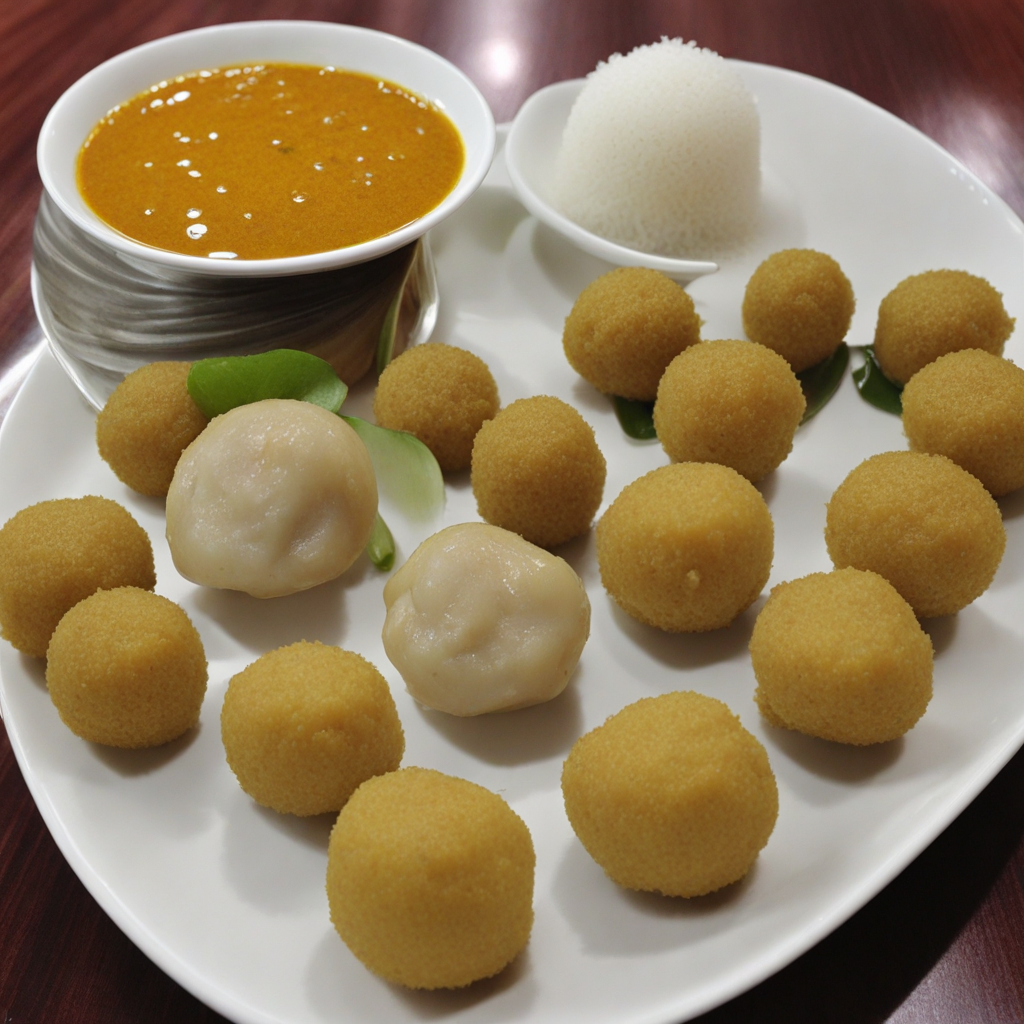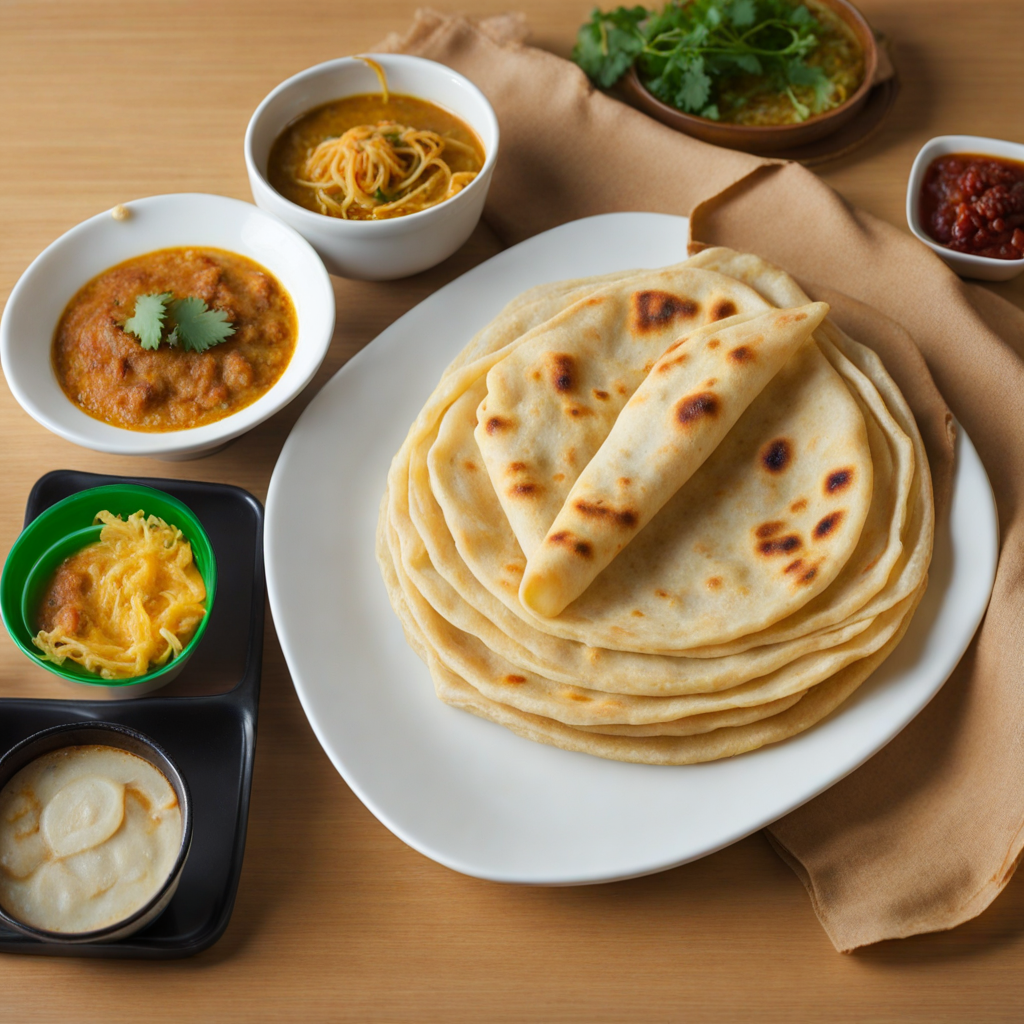Nasi Lemak
Nasi Lemak is a beloved dish in Singapore that showcases the rich culinary heritage of the region. This fragrant rice dish is cooked in coconut milk, giving it a creamy texture and a subtle sweetness that sets the foundation for a delightful meal. Traditionally served on a banana leaf, the rice is accompanied by a variety of side dishes that complement its flavor, creating a harmonious balance of tastes and textures. The rice is often accompanied by sambal, a spicy chili paste that adds a fiery kick, and is essential to the dish's identity. Typically, Nasi Lemak is served with an array of accompaniments such as crispy fried anchovies, crunchy peanuts, boiled eggs, and fresh cucumber slices. Each element contributes to the overall experience, with the salty anchovies and peanuts contrasting beautifully with the creamy rice and spicy sambal. Additionally, many versions feature fried chicken, rendang (a spicy meat dish), or even a fragrant curry, allowing for a variety of interpretations based on personal preferences. This diversity makes Nasi Lemak not only a satisfying meal but also an exciting culinary adventure. The beauty of Nasi Lemak lies in its versatility and the balance of flavors it offers. It can be enjoyed as a hearty breakfast, a filling lunch, or even as a late-night snack. The dish is often paired with a refreshing drink, such as teh tarik (pulled tea) or a sweetened coconut drink, enhancing the overall dining experience. For anyone seeking to explore new tastes, Nasi Lemak is a must-try dish that encapsulates the essence of Singapore's food culture, inviting you to savor each layer of flavor and enjoy a taste of its vibrant heritage.
How It Became This Dish
## The Culinary Journey of Nasi Lemak: Singapore's Beloved椰浆饭 Origins Nasi Lemak, known in Singapore as 椰浆饭 (pronounced "yē jiāng fàn"), is a fragrant rice dish that has become a beloved staple in Singaporean cuisine. Its name translates roughly to "rich rice," referring to the creamy, coconut-infused rice that serves as the base of the dish. The origins of Nasi Lemak are deeply rooted in Malay culinary traditions, specifically from the Malay Archipelago, which encompasses modern-day Malaysia, Indonesia, and Singapore. Although the exact timeline of its inception is difficult to pinpoint, historical evidence suggests that the dish was likely established during the Malay Sultanate period, around the 15th century. Traditionally, Nasi Lemak is prepared with rice cooked in coconut milk, often accompanied by various sides such as fried anchovies (ikan bilis), peanuts, cucumber slices, hard-boiled eggs, and sambal, a spicy chili paste. The dish was originally a simple meal for fishermen and laborers, providing the necessary sustenance for long hours of work. Its humble beginnings reflect the agrarian lifestyle of the Malay people, who relied on locally sourced ingredients. Cultural Significance Nasi Lemak is more than just a meal; it embodies the multicultural spirit of Singapore. The dish has transcended its Malay origins to become a national favorite, representing the diverse tapestry of cultures that make up Singaporean society. As the country grew and modernized, Nasi Lemak became a symbol of unity among the various ethnic groups, including Malays, Chinese, and Indians. In Singapore, it is common to find Nasi Lemak stalls in hawker centers, where it is served with a variety of accompaniments. This adaptability has allowed the dish to evolve and incorporate flavors from different culinary traditions. For instance, in addition to the traditional sambal, some vendors offer unique twists such as rendang, fried chicken, or even grilled fish, showcasing the creativity of local cooks. Nasi Lemak is also a dish that brings people together, often enjoyed during communal meals and celebrations. It is a popular choice for breakfast, lunch, and dinner, and is frequently served during festive occasions, such as weddings and family gatherings. The dish's versatility and widespread appeal have led to its recognition as a quintessential part of Singapore's culinary identity. Development Over Time As Singapore underwent significant social and economic changes throughout the 20th century, so too did Nasi Lemak. The post-war period saw a rise in the popularity of hawker culture, which democratized access to delicious, affordable food. Nasi Lemak became one of the stars of this burgeoning food scene, with hawkers setting up stalls in public spaces to serve the masses. The dish's affordability and satisfying nature made it a go-to choice for many Singaporeans, regardless of their social status. During the 1980s and 1990s, the dish continued to evolve, with various interpretations emerging as it was embraced by different communities. The infusion of Chinese and Indian flavors into Nasi Lemak is a testament to Singapore's multicultural ethos. The traditional sambal was sometimes replaced or supplemented with curry sauces, and the addition of fried chicken or even crispy pork belly became popular among hawker stalls. In recent years, the rise of food blogging and social media has propelled Nasi Lemak to new heights of popularity. Food enthusiasts and influencers have taken to platforms like Instagram to showcase visually appealing presentations of Nasi Lemak, leading to an increase in artisanal and gourmet versions of the dish. Creative interpretations have emerged, such as Nasi Lemak burger, where coconut rice patties are used as buns, and even sushi rolls filled with traditional Nasi Lemak ingredients. The dish's adaptation to contemporary tastes is not limited to presentation; it has also inspired chefs to experiment with healthier versions, incorporating organic and locally sourced ingredients. This evolution reflects a broader trend in Singapore's food scene, where traditional dishes are reimagined to meet the demands of health-conscious diners. Global Recognition As Singapore's culinary scene gained international acclaim, Nasi Lemak emerged as an ambassador of Singaporean cuisine on the global stage. Food festivals, international culinary competitions, and even the Michelin guide have acknowledged the dish, bringing it into the limelight and attracting tourists eager to experience authentic local flavors. In recent years, Nasi Lemak has been featured in numerous food documentaries and travel shows, further solidifying its status as a must-try dish for visitors to Singapore. Restaurants abroad specializing in Southeast Asian cuisine have also begun to include Nasi Lemak on their menus, introducing this delightful dish to a broader audience. Conclusion Nasi Lemak, or 椰浆饭, is a dish that encapsulates the history, culture, and culinary evolution of Singapore. From its humble beginnings as a laborer's meal to its status as a treasured national dish, Nasi Lemak tells the story of a community that celebrates diversity through food. As Singapore continues to grow and change, Nasi Lemak remains a beloved symbol of its rich heritage, a dish that brings people together and delights the palate. In a world that often feels fragmented, Nasi Lemak serves as a reminder of the power of food to unite us across cultures and generations. Its journey from the shores of the Malay Archipelago to the bustling streets of Singapore is a testament to the enduring legacy of traditional cuisine and its ability to adapt and thrive in an ever-changing world. Whether enjoyed at a hawker center, a fine dining establishment, or in the comfort of one’s home, Nasi Lemak continues to be a cherished dish that holds a special place in the hearts of many.
You may like
Discover local flavors from Singapore







